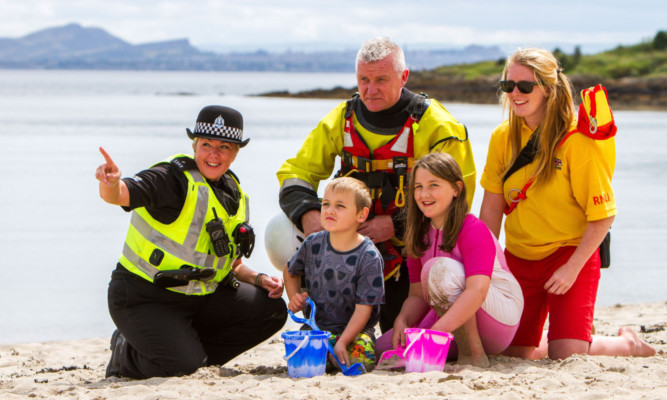The mother of a teenager who died following a so-called tombstoning accident at a disused quarry has welcomed the latest efforts by the emergency services to raise awareness about water safety.
Gillian Barclay, 51, whose 18-year-old son Cameron Lancaster died after plunging into Prestonhill Quarry, near Inverkeithing, last August, backed an initiative launched on Saturday.
The Scottish Fire and Rescue Service teamed up with Police Scotland and the Royal National Lifeboat Institution to deliver key water safety advice to the public at Aberdour Beach.
For the next four weekends on Fridays from 6 to 8pm and on Saturdays from 1 to 3pm SFRS, Police Scotland and RNLI staff will be on hand to talk to the public about what they can do to stay safe around water.
They key message is that swimming in unsupervised open water can be extremely dangerous.
Gillian was angry and devastated when she learned three weeks ago that John McKay, 18, had also died at Prestonhill Quarry just 10 months after her own son perished.
While she was unable to attend the Aberdour event on Saturday, she told The Courier she was right behind it and was continuing to push for the quarry to be drained possibly as a test case under the Community Empowerment Act.
Gillian, of Burntisland, said: “I have enormous respect for the work of all the fire and rescue services who tried tirelessly for hours to recover my son’s body from the depths of Prestonhill Quarry.
“I know they paid a heavy price emotionally.
“I fully endorse their clear messages about the danger of deep waters.
“In the summer it is inviting and fun but without warning it can become dangerous and unsafe.”
Dunfermline Fire Station manager Mark Bryce said: “After two deaths from drowning that devastated our community in the last year, it’s extremely important for us to get out there and speak to the public about staying safe near the water.
“What might start as a harmless dip can have tragic consequences if the proper advice isn’t followed.
“Although it might seem warm enough, open water can be very cold and cause cold water shock that can have deadly consequences. It’s also often impossible to know what hazards lie below the surface of the water.”
Further information about the water safety campaign can be found at
bit.ly/SFRSWaterSafety
.
